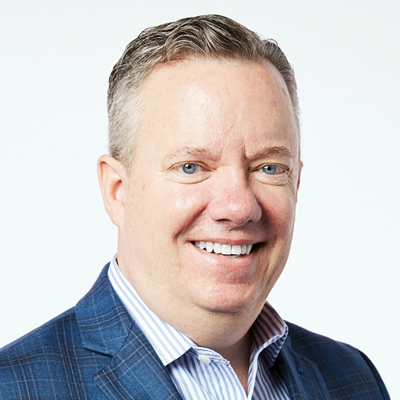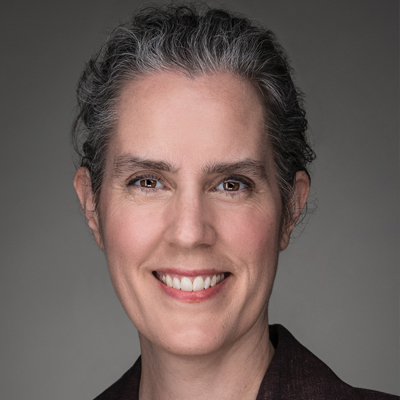Property/Casualty
Catastrophe Modeling, Improved Risk Assessment Among Panel Recommendations to Increase Takeup of Earthquake Insurance
AM Best TV spoke with four industry experts about closing the protection gap that exists even in areas with frequent earthquake activity.
Earthquake loss is a potential catastrophe known to just about everyone living in exposed regions, yet governments and insurers remain frustrated by the limited number of property owners who obtain earthquake insurance. And for those who do get insurance, lapses in coverage can be frequent.
AM Best TV spoke with a panel of experts about what can and should be done to address this issue before the next catastrophic earthquake hits the United States. Participants included Jake Clark, managing director, Guy Carpenter; Brandie Andrews, vice president, AIR Worldwide's Consulting and Client Services Group; Andy Tran, senior vice president, Swiss Re America; and John Huff, CEO, Association of Bermuda Insurers and Reinsurers and former insurance commissioner for the state of Missouri. Following is an edited transcript of the conversation.
Is there a protection gap when it comes to earthquakes?

The most necessary step is figuring out where the risk sits today.
John Huff
Association of Bermuda Insurers and Reinsurers

If we can’t get it [mandatory coverage] accomplished on a peril like flood, where I think the argument is probably more compelling than earthquake in some respects, how are we ever going to effect that on a peril like earthquake?
Jake Clark
Guy Carpenter

The annual expected uninsured loss in the U.S. is around $42 billion in 2018 dollars. Of that, $26 billion is earthquake risk. That’s almost equivalent to the total annual expected loss for insured hurricane losses in the U.S.
Andy Tran
Swiss Re America

Another emerging risk transfer trend for governments is the use of catastrophe bonds, which are similar to risk pools, but instead of getting backers from the reinsurance or insurance markets, they get backing from the capital markets.
Brandie Andrews
AIR Worldwide
Tran: Before I answer that question, let me quickly define that term. The protection gap is really the difference between the total economic loss and the insured loss. Essentially, it's the uninsured portion. Now the answer to your question is clearly yes. Swiss Re published a sigma report on closing the protection gap back in 2015 on property risk. It highlighted multiple perils that contributed to this gap. The largest peril in the U.S. is earthquake risk. To give you a little context, we think the annual expected uninsured loss in the U.S. is around $42 billion in 2018 dollars. Of that, $26 billion is earthquake risk. That's almost equivalent to the total annual expected loss for insured hurricane losses in the U.S. This is not just a California phenomenon. It's consistent in the other Western states as well as in [Missouri] in the New Madrid hazard zone.
What kinds of financial instruments are available to help governments and communities protect against this risk?
Andrews: One interesting financial instrument is what's called a regional sovereign insurance pool. The World Bank began facilitating these programs in the last 10 or 15 years, and AIR helps with the catastrophe modeling efforts. Instead of pooling individual policyholders, you're pooling countries. The pooled risk is more attractive and provides governments parametric insurance coverage at a much lower cost than if they were to purchase it individually from the insurance market. Another emerging risk transfer trend for governments is the use of catastrophe bonds, which are similar to risk pools, but instead of getting backers from the reinsurance or insurance markets, they get backing from the capital markets.
Can capital providers actually play a role in reducing earthquake risk and creating insurance uptake?
Clark: Yes. I've been working in the public sector space for a while, trying to match up our industry with [ways] to deleverage some of this risk that's falling to governments. What's encouraging is that we're talking about earthquakes. Normally, when we have these conversations—if you think about pandemic, wildfire or flood—we're always talking about a week after untold devastation has been inflicted upon some of our communities.
Keeping it germane to the U.S., a lot of what's going on, we think, is driven by how the Stafford Act is structured, the process of how federal disaster declarations are made, the politics around them, and how appropriations are made to then fund those disasters. All of that is prompting, in our opinion, a lack of risk assessment that's occurring at the local and the state level, and exacerbating a belief that all of these responsibilities need to fall back to the federal government. Certainly, longer term, tools need to be looked at and reassessed. How do you appropriately structure risk capital around what we're trying to do? If that's done properly, then absolutely there is the ability to bring risk capital, [for example] broader structured programs similar to what the NFIP has done on flood. We also, though, need to look at all aspects. How regulation works, how insurance companies are allowed to reflect appropriate rates to charge for the risk. How do you increase takeup in that environment? In the short term, there's a welcome opportunity from our industry in looking at [ways] to help close some of the gap.
Since the federal government holds the vast majority of the risk exposure, should it mandate the purchase of earthquake coverage or consider state disaster deductibles on assistance?
Huff: The most necessary step is figuring out where the risk sits today. Whether at the mortgage level for Fannie and Freddie or [people who] may have paid off their home and have not purchased an endorsement for earthquake coverage. As you know, the typical homeowners policy does not provide earthquake coverage. Without that endorsement, there's absolutely no coverage there. The limits for what FEMA can give for individual assistance are woeful, and so the federal government is restricted on what they could [do].
[Instead of] a mandate for coverage, maybe incremental steps would be a mandated offering of coverage, as the education process for consumers to know their risk and to know what coverages are available.
Clark: If we can't get it [mandatory coverage] accomplished on a peril like flood, where I think the argument is probably more compelling than earthquake in some respects, how are we ever going to effect that on a peril like earthquake?
I'm sometimes struck by the dynamic of how regulation works in different areas of this country in terms of reflecting what's appropriate risk rate, just a more robust understanding of what's the risk somebody holds, and then what does it really cost to finance that risk? Then moving from there, how do you structure risk capital around it? Right now, there are far too many examples where taxpayer, debt-based, post-event financing is being called on to fund all of this.
Who ultimately bears the cost when it comes to earthquakes?
Tran: Aside from a risk that's already insured sadly, the homeowners will shoulder a significant burden of that loss under what's known as self insured. This is especially for those with equity in their home. Some banks may have that exposure through the mortgage exposure [that is often further repackaged as] mortgage-backed securities. Ultimately it's down to the investors. Again, what remains rests with the taxpayer.
How can the insurance industry better communicate the risk to homeowners, to help increase the purchase of earthquake insurance and close that protection gap?
Andrews: In an average year in North America, there's about a 62% gap in insurance protection across all the different perils that we model. The majority of that does come from earthquake and flood. People studying the uninsured problem claim that not having the right price signal for the risk is important, but obviously it's not the only thing. People need more than just a price. In learning how governments think about buying insurance for disaster recovery finance, it strikes me that there's a parallel to homeowners thinking about buying earthquake insurance.
One of the key considerations for governments is getting the best value for the premium that they pay. It's the concept of the insurance multiple.
Clark: I know this is true in flood; I believe it's true in earthquake as well, and it's an absolute shame. What sells more flood insurance and earthquake insurance than anything? Floods and earthquakes. That's a crime. I think we can all admit it. These are just absolute wealth destroying events. Certainly, at the time of loss, and FEMA acknowledges this on flood, there is nothing that will put dollars into the hands of people quicker than an insurance policy. I have to believe that at the time of loss, the multiples are 6-to-1, 7-to-1 in terms of what people are getting for their premium.
Would smaller companies, which are required to write earthquake coverage, run the same risk in the event of a large scale earthquake if they had to have a mandatory offering?
Huff: There are many ways the regulator can look at the aggregation of losses, and there are capital management tools where a company, a small company, for instance, would not have to hold that risk. They could go to the reinsurance markets, insurance for insurance companies. Our market is very well known for reinsurance, and they have the capital and capacity. A small company would not have to retain that risk, necessarily, or they could choose to retain part of that risk, whatever their risk appetite is.
What's the big takeaway from this panel?
Andrews: The takeaway for me is that catastrophe modelers and other providers of risk analytics can really help the effort to move us forward to more insurance takeup and pre-disaster mitigation.
Clark: A greater understanding of risk and where that sits will lead to more functional and improved change. We think the future is bright, and we're looking forward to working with people to come up with better solutions.



























